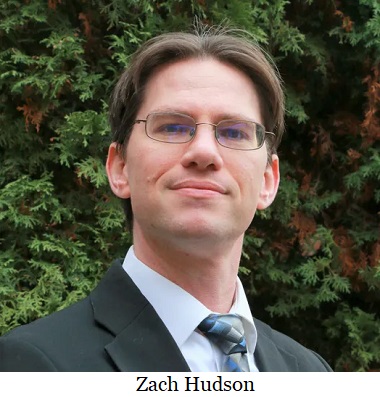The task force would review history and trends
Oregon public schools provide education to a variety of students, and some classifications of students bring additional funding to those districts. Newly elected Representative Zach Hudson (D-Troutdale) who enjoyed a career in teaching at Gresham, Corbett and Reynolds high schools has sponsored legislation which proposes a review of the current classifications and suggestions for improvements to them if necessary.
HB 3142 establishes a task force to examine the State School Fund ADMw. ADMw is one of the funding calculations for K-12 schools. Average daily membership (ADM) is weighted to compensate for specific student needs and uncontrollable cost factors, including special education students (IEP and Sped), English as a second language (ESL), students in poverty, teen parents, neglected or delinquent, youth in foster care and the small school correction factors.
The task force would review history and trends of usage and make recommendations for any changes needed and report back to an interim Legislative Education Committee. The 6 committee members would represent school boards, school administrators, educators, parents, classified school employees and the Oregon Department of Education.
One possible recommendation of the committee could be to change the existing formula calculation for the current categories. The currently ADMw categories and weights are as follows:
- Students in ESL programs: 0.50
- Students in Pregnant and Parenting Programs: 1.00
- IEP Students capped at 11% of District ADMr: 1.00
- Students in Poverty: 0.25
- Students in Foster Care and Neglected/Delinquent: 0.25
- Small School Correction: 1.00
One current formula that has been discussed widely among Oregon School Board Association Members (OSBA) is the cap at 11% for students in special education and IEPs. Many school districts see student rations well above the capped 11%. When this occurs, they must allocate resources from other areas of their budget to meet the needs of those students.
A D V E R T I S E M E N T

A D V E R T I S E M E N T
It is also possible that the committee will take cues from other legislation already introduced and look at equity and inclusion. For example, ODE does not currently have a statewide student plan focused on the daily education experiences of LGBTQ2SIA+ students. SB52 which has passed out of the Senate Education committee proposes the formation of an advisory group to address this concern. Proposals from the advisory committee could then lead to changes in education plans requiring additional funding for some districts. A new ADMw category would be one way to address the new financial need.
In addition, there is a great deal of conversation this session around equity for BIPOC (Black, Indigenous, People of Color) communities. Therefore, an additional ADMw category for BIPOC community schools to assist them with equity programs and education opportunities may be prudent. During a Joint Subcommittee on Education, the Legislative Fiscal Office presented the Education System Budget overview. One of the items presented was a slide on graduation rates showing the overall rates for the 2016-17 cohort of students (Class of 2020). The overall graduation rate for the cohort was around 82.63%. However, the rates among ethnicities varied greatly. Representative Teresa Alonso Leon (House District 22 – Woodburn) said in addressing the slide “Now more than ever we need to advocate to make sure that our success equates to all of our students, across the board, graduating at the same level.†She continued, “I won’t be happy until we are only 1 or 2% off our graduation rates among the groupsâ€. The largest negative disparity is in graduation rates among the American Indian/Alaskan Native population at 67.19% followed by Black/African American 76.29% and Native Hawaiian/Pacific Islanders at 76.64%.
HB 3142 has been referred to the House Education committee but has not been scheduled for a hearing as of press time.
--Terese Humboldt| Post Date: 2021-02-17 16:25:55 | Last Update: 2021-02-17 17:01:09 |







